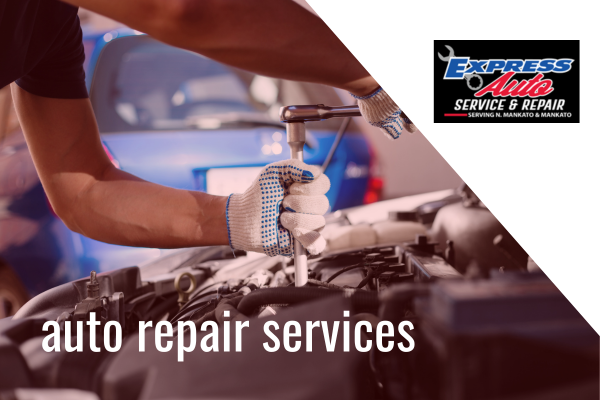All Categories
Featured

Two key services that are typically forgotten but have a substantial influence on tire long life and efficiency are tire rotation and placement. Allow's dive right into what tire turning and alignment are and why they're essential for your car.
What Is Tire Turning? Tire turning is the procedure of moving your tires from one setting to one more to ensure they wear equally. Considering that your automobile's tires operate at different prices depending upon their position (front tires versus back tires), revolving them consistently aids to disperse the wear uniformly, leading to a much longer life expectancy for your tires.
Tires on the front axle often tend to wear quicker than those on the rear axle, particularly in front-wheel-drive cars, where the front tires take care of both guiding and power. On the other hand, back tires could wear unevenly depending upon the automobile's weight distribution and driving conditions. By revolving your tires every 6,000 to 8,000 miles (or as recommended by the supplier), you'll ensure a more balanced wear pattern.
What Is Tire Placement? Tire positioning, likewise called wheel placement, describes changing the angles of your auto's wheels to the manufacturer's requirements. Proper positioning ensures that your tires are directing in the appropriate direction, and it helps maximize tire life and improve car handling. There are three main elements of alignment: camber, caster, and toe.
Camber describes the tilt of the tires from the front of the automobile. If your tires are slanted way too much inward or outside, it can cause unequal wear. Wheel describes the angle of the steering axis when checked out from the side of the automobile. This influences the security of the guiding, especially when driving straight. Toe refers to the angle at which the tires direct inward or outward when viewed from above. This influences exactly how your lorry tracks on the roadway. A correct positioning makes sure that all four tires are pointing directly in advance and are tilted correctly. Misalignment can arise from hitting potholes, curbs, or simply from the wear of suspension components gradually.
Why Tire Turning and Placement Issue. Extended Tire Life. Both tire turning and positioning help avoid irregular tire wear. When your tires use uniformly, they last longer, which can conserve you money in the future by lowering the need for premature replacements.
Improved Safety. Proper tire turning and placement improve vehicle stability and handling. Misaligned tires or erratically worn tires can adversely impact your capability to guide and stop your lorry, specifically in emergency situation situations. Regular upkeep ensures your tires carry out optimally, providing a safer driving experience.
Much Better Gas Efficiency. If your tires are not lined up appropriately, they might drag versus the roadway surface, creating resistance. This extra rubbing can lower fuel performance, creating your vehicle to consume even more gas. Routine tire placement ensures that your lorry moves effectively, enhancing gas mileage.
Enhanced Comfort. Imbalance or unevenly used tires can cause a rougher adventure, as your vehicle might pull away or cause vibrations. By maintaining your tires turned and lined up, you'll take pleasure in a smoother and a lot more comfortable driving experience.
Signs That Your Tires Required Turning or Alignment. It's essential to remain sharp for any kind of signs that your tires need rotation or positioning. Keep an eye out for these common indications:
Uneven Tire Put On: If you discover that tire is significantly a lot more used than the others, it might be time for a turning or placement. Guiding Pull: If your cars and truck pulls to one side while driving right, this could show imbalance. Resonances: If you feel resonances in the guiding wheel or the automobile itself, it might be an indicator of imbalance or unequal tire wear. Screeching Tires: Unusual tire sound could likewise indicate inappropriate alignment or the demand for a tire turning. How Often Should You Revolve and Straighten Your Tires? Tire rotation need to usually be done every 6,000 to 8,000 miles or as specified in your car's proprietor's handbook. It's a great concept to turn your tires throughout every oil modification, as this will certainly aid you remain on top of regular upkeep.
As for placement, it doesn't require as constant service. Usually, positioning ought to be examined at least yearly or whenever you discover concerns like pulling to one side or resonance. You might also require placement if you've struck a big split or aesthetic, which can throw your wheels out of placement.
Verdict: Keep Your Tires in Top Shape. Tire rotation and positioning are crucial services that keep your vehicle running efficiently, safely, and effectively. By taking the time to have your tires turned and lined up consistently, you're buying your auto's efficiency and long life, while also improving your safety when traveling. Keep proactive with tire maintenance, and your car will certainly thank you with far better gas economic climate, improved handling, and prolonged tire life.
Latest Posts
Preventative Maintenance at Montclare Auto Repair: Keep Your Vehicle Reliable for Years
Checking Out Quality with A-Abel Roofing's Gallery
Change Your Shower Room in a Day